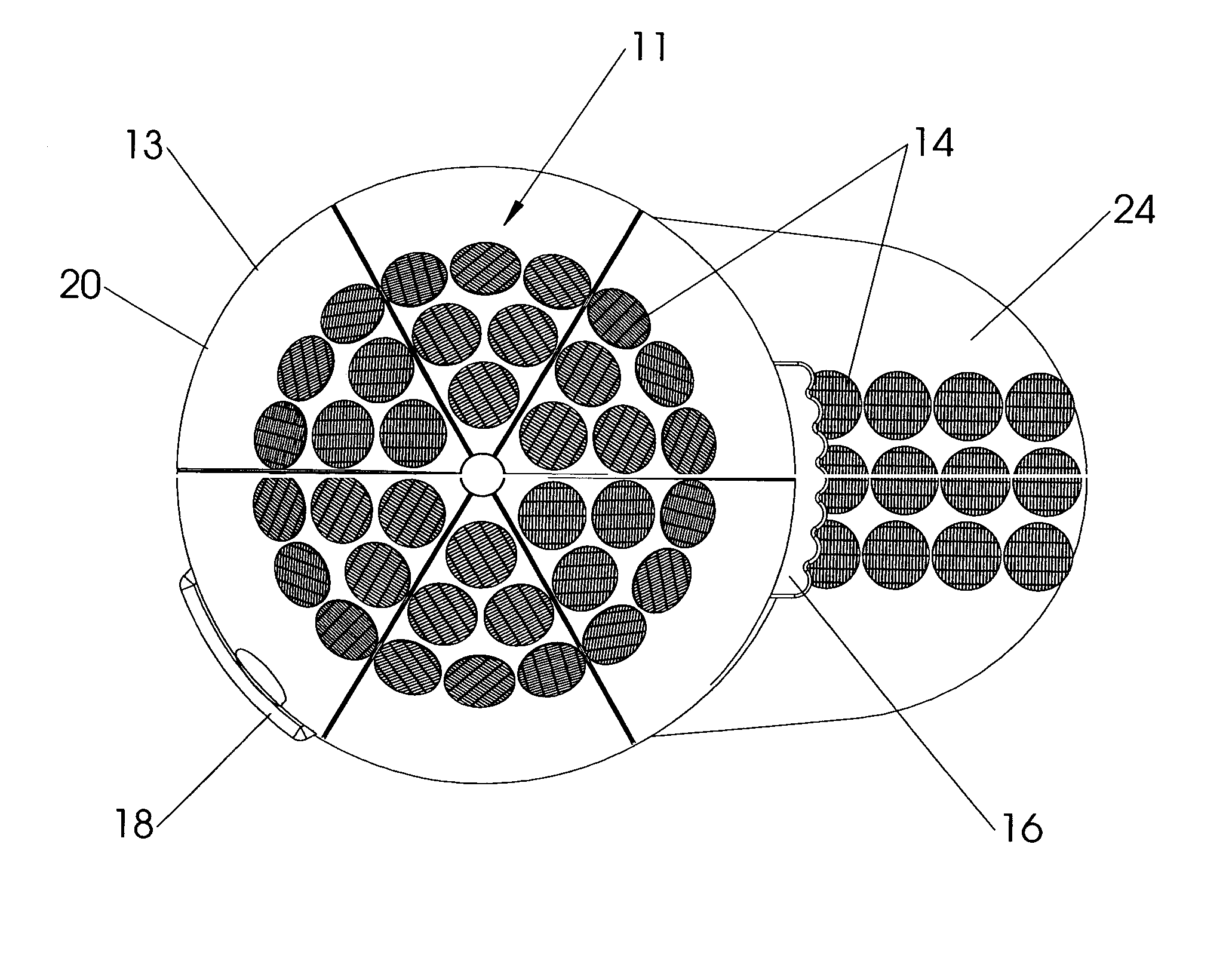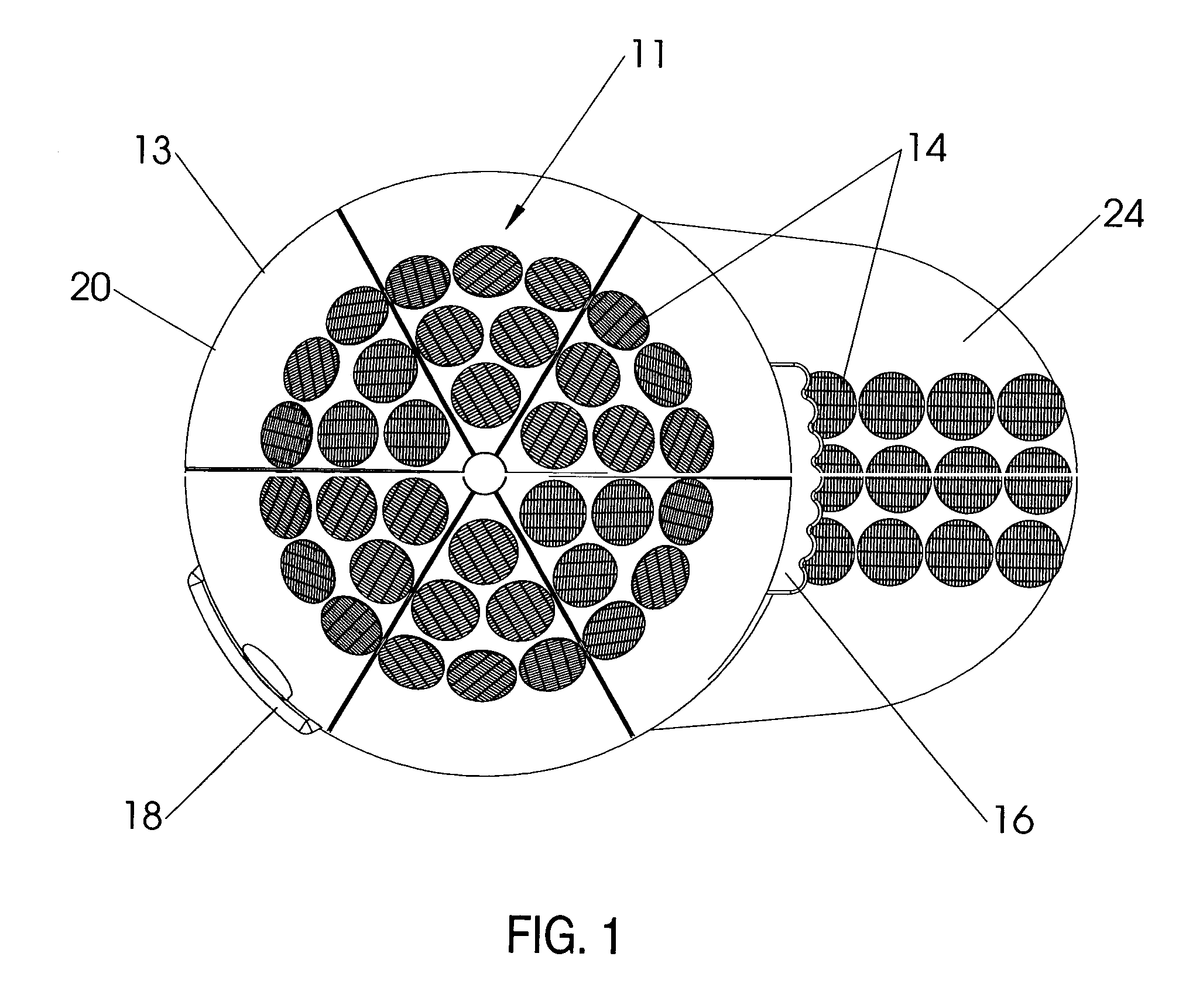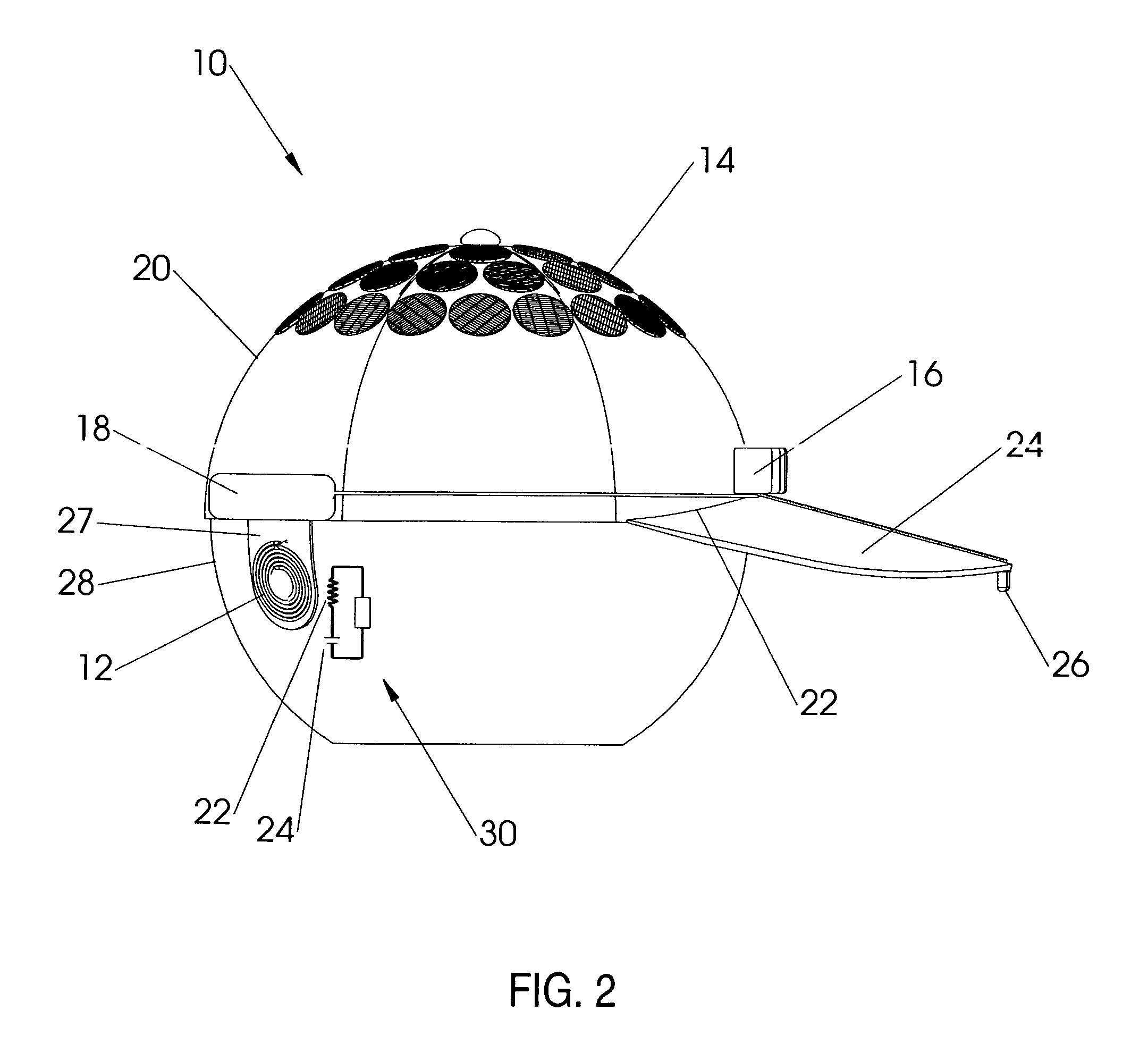Photovoltaic powered charging apparatus for implanted rechargeable batteries
a rechargeable battery and photovoltaic technology, applied in the field of rechargeable batteries, can solve the problems of inconvenient procedure and uncomfortable
- Summary
- Abstract
- Description
- Claims
- Application Information
AI Technical Summary
Benefits of technology
Problems solved by technology
Method used
Image
Examples
Embodiment Construction
[0018]The following text describes a preferred mode presently contemplated for carrying out the invention and is not intended to describe all possible modifications and variations consistent with the spirit and purpose of the invention. The scope of the invention should be determined with reference to the claims.
[0019]FIG. 1 is a top view of an example of a battery-charging apparatus 10, wherein the device is based on a conventional baseball cap. A photovoltaic powered inductance charging unit 11 is mounted to the cap 13 for a patient who has an inductance charged, battery-powered device (indicated by reference numeral 30 in FIG. 2) implanted in the skull or brain. Charging unit 11 comprises a plurality of photovoltaic cells 14 mounted on the crown 20 and visor 24 of cap 13, a sending coil 12 (see FIG. 2) mounted at the edge of cap 13, and a charge controller 18 mounted to the cap 13, preferably in proximity to the sending coil 12. The photovoltaic cells 14 allow continuous charging...
PUM
 Login to View More
Login to View More Abstract
Description
Claims
Application Information
 Login to View More
Login to View More - R&D
- Intellectual Property
- Life Sciences
- Materials
- Tech Scout
- Unparalleled Data Quality
- Higher Quality Content
- 60% Fewer Hallucinations
Browse by: Latest US Patents, China's latest patents, Technical Efficacy Thesaurus, Application Domain, Technology Topic, Popular Technical Reports.
© 2025 PatSnap. All rights reserved.Legal|Privacy policy|Modern Slavery Act Transparency Statement|Sitemap|About US| Contact US: help@patsnap.com



